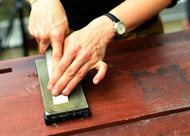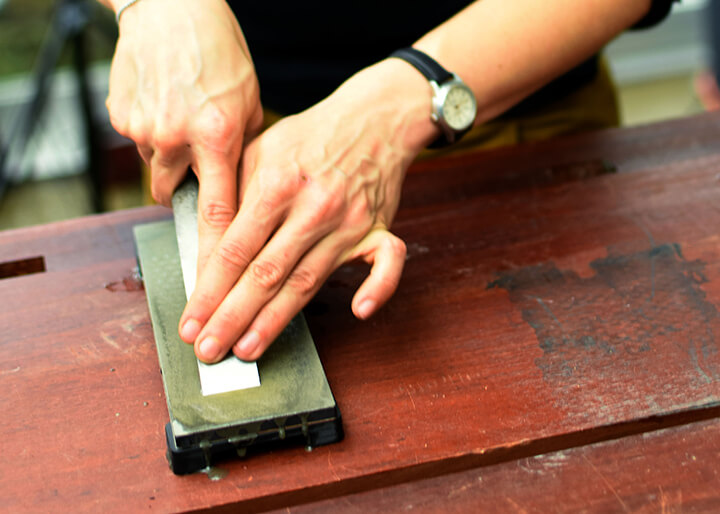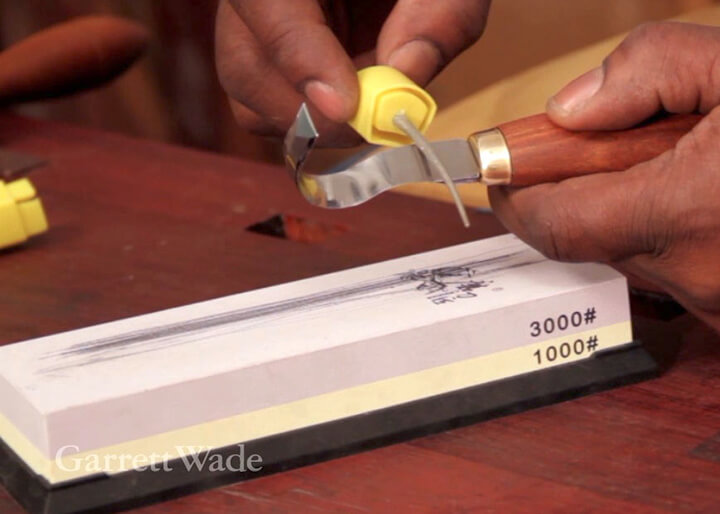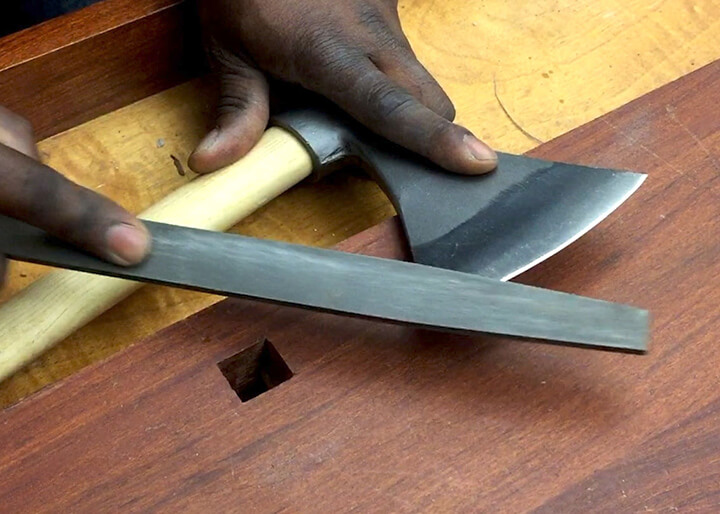We have a great deal of respect for the traditional oilstones (for example, Arkansas stones), and for the esteem in which they are held. There are also man-made oilstones available, often called “India” stones, typically made by Norton in the USA. However, we have come to believe that water stones, in many respects, offer superior performance and value.
First, a bit of background: For many years, woodworkers have often used a three stage system with many possible variations. Basic shaping of the tool was done on a hand or power grinder with a coarse stone, either man-made or from natural stone. This was usually followed with a coarse-fine combination stone for refinement of the edge. While some woodworkers stopped there, others used natural oil stones for an even finer finish (soft, hard, and hard black Arkansas stones). Some went further and used a leather strop, with or without various stropping compounds.
Similar steps are still necessary, but the recent development of high-quality man-made water stones has made the process faster and results in better edges. It is still necessary to have a good basic combination stone to repair damage caused by accidents—whether from a dropped chisel or a hidden nail—but all other regular sharpening is best done with these water stones. They cut quickly, and, in our opinion, produce the best edges of any.
The secret to fast cutting action of a water stone lies in the shape of the abrasive particles, and in the nature of the bond between particles. Although the particles are similar in shape to those in natural or man-made oil stones, the bond is much more open. An open (or friable) bond does not restrict the cutting action of the particles, and allows worn particles to be released from the stone constantly, revealing fresh, sharp particles. Garrett Wade offers a fantastic waterstone made of corundum, that is 1000 and 3000 grit on opposing sides. This works well to hone a shaper edge to your tools after the initial pass with something rougher. We sell this as part of a Universal Sharpening Set.
Finally, waterstones are easier to care for, because they use water as a lubricant. It’s far more convenient to go to your kitchen or slop-sink tap for free lubricant than to make sure you have the proper oil on hand to use with your oilstones. Also, the matter of disposal comes into play: when done sharpening with a waterstone, you simply dump the slurry/water down the sink. With the oil slurry, you have to find a safe and clean way to dump it.
In recent years, we’ve become big fans of diamond stones. (In fact, we no longer even sell oilstones.) A diamond stone is a steel plate with infinitesimally small, industrial-grade diamond used as the sharpening grit. Diamond stones are generally sold in courser grits (indeed, one of our popular diamond stones comes two-sided as 360 and 600 grit), so they are bested used at the start of sharpening a really dull knife, or fixing big nicks. Garrett Wade also sells a handy palm-sized diamond stone about the size and shape of a computer mouse, that is great for axes and machetes. This one is really course, with 220 and 360-grit sides.








